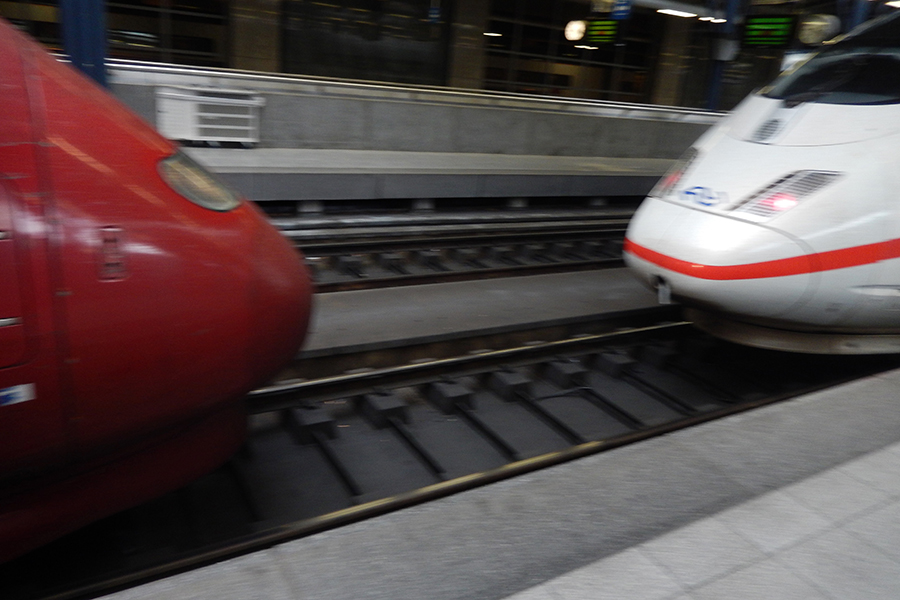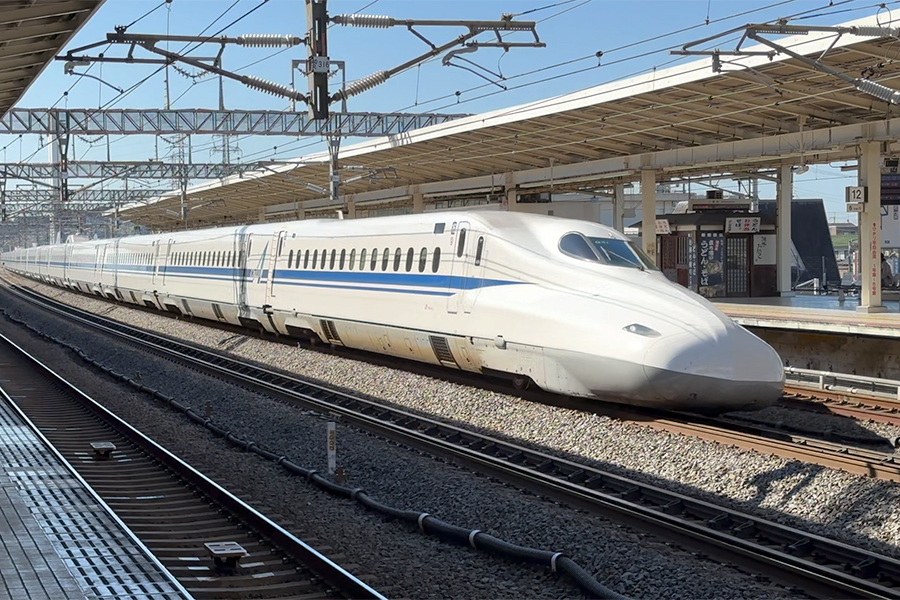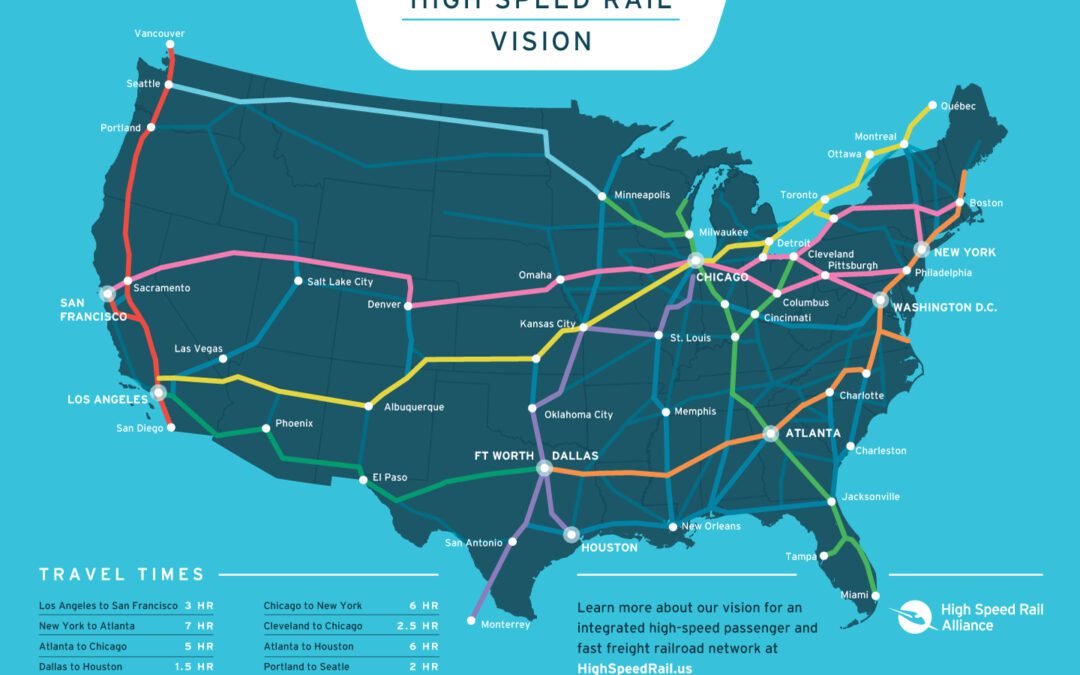Traveling last Friday through Iowa and Illinois, an eastbound Amtrak California Zephyr showed little or no sign of being affected by the CrowdStrike glitch and the cascading computer outages that followed. A morning announcement advised travelers that the café car...
This photo does not capture a collision. Yet the story behind this face-off has an important lesson as we develop HSR in the U.S. To cut to my conclusion, the U.S. currently is cobbling together deals for fast trains; but alternative systems that last will require federal authority and sufficient capital.
First, the history lesson. During one of my five multi-week European tours to study their trains and stations, I took this photo while alighting at Brussels South. I’m descending to the concourse and my Thalys train is nose-to-nose with DB a trainset. While stopped, the trains created a dramatic tension; capturing key problems in developing HSR between jurisdictions.
When the first of four European Union Directives standardizing rail was adopted in 1991, there was great optimism about spreading HSR from France through Belgium to Amsterdam and Thalys was formed. But that political goodwill disappeared fast when wealthy Netherlands refused to buy Thalys shares. Its rocky start got worse as service ran slowly on conventional tracks as HS tracks were delivered years late. Germany’s DB eventually was persuaded to buy 10% of the shares, but sold them back in a few years to the French and DB trains again dominated the Cologne – Brussels route (hence the standoff photo above.)
Completing this mixed-up failure, Belgium’s cultural conflicts produced no lasting governing coalition nor reliable subsidy for fast trains. So by 2018, SNCF (France’s railroad) had to buy all Thalys shares of Europe’s most underinvested HSR system. France unloaded its Thalys turkey quickly by merging Thalys with Eurostar, a competitor on the Amsterdam to Paris route. The Thalys branding is being dropped, a casualty of small jurisdictions lacking commitment.
The lessons for the U.S.? First, any interstate HS line is at high-risk of freeloaders like the Dutch or culture-warriors like the Belgians. While the EU’s original Authority was too federated to start Thalys properly, the EU reformed. Its 4th Rail Directive adopted in 2016 has consolidated real authority and promises to continue reforming Europe’s rails; collaborating better with freight and increasing innovation for passengers, while decreasing subsidy.
Now for a useful analogy, let’s compare this Thalys corridor to the NEC; owned by four states and Amtrak. Governance by The NEC Commission includes all nine state DOTs balanced by equal seats for USDOT and Amtrak. Is this a recipe for the rapid innovation climate change requires of us? Or will the NEC’s Commission lead us to impasse?
Closer to home is the High Speed Rail Association’s pivotal project, Crossrail Chicago. We can assume there will soon be enough commitment to get from O’Hare through downtown and to Hyde Park for a Phase 1. But to get to Phase 2 growth, Crossrail must go thru Indiana to Michigan. This is projected to be Crossrail’s second largest source of passengers. We will repeat Thalys’ fatal mistake to think that current law, the Interstate Compact, is sufficient to upgrade rail through a recalcitrant or unreliable state… not unlike the Netherlands or Belgium.
Second lesson: Europe’s 1990s’ good feelings for HS rail faded into reality. The same will happen in the U.S. Today’s abundant federal funds are unlikely to carry us through an upgrade. Europe endured decades of political machinations and causing cost-overruns. But Europe finally created proper authority. Unless we want to endure decades of waste, the U.S. needs to start building proper authority now if we ever are to get rail’s advantages that Europe enjoys.
Both lessons require the U.S. to innovate our federal structure. It now is so calcified that authority is vested in states who make rail, at best, a tertiary mode when rail is, in reality, the most effective. By Train Day 2024, we will figure out a way out.
Robert Munson is a long-time HSRA member, represents Illinois on the Council of the Rail Passengers Association and his other opinions can be found on the two websites below.
And you can contact him at rcmunson -at- icloud.com or 773-317-0573.
whatstationsteach.org
thereauthorizationdialogues.com




